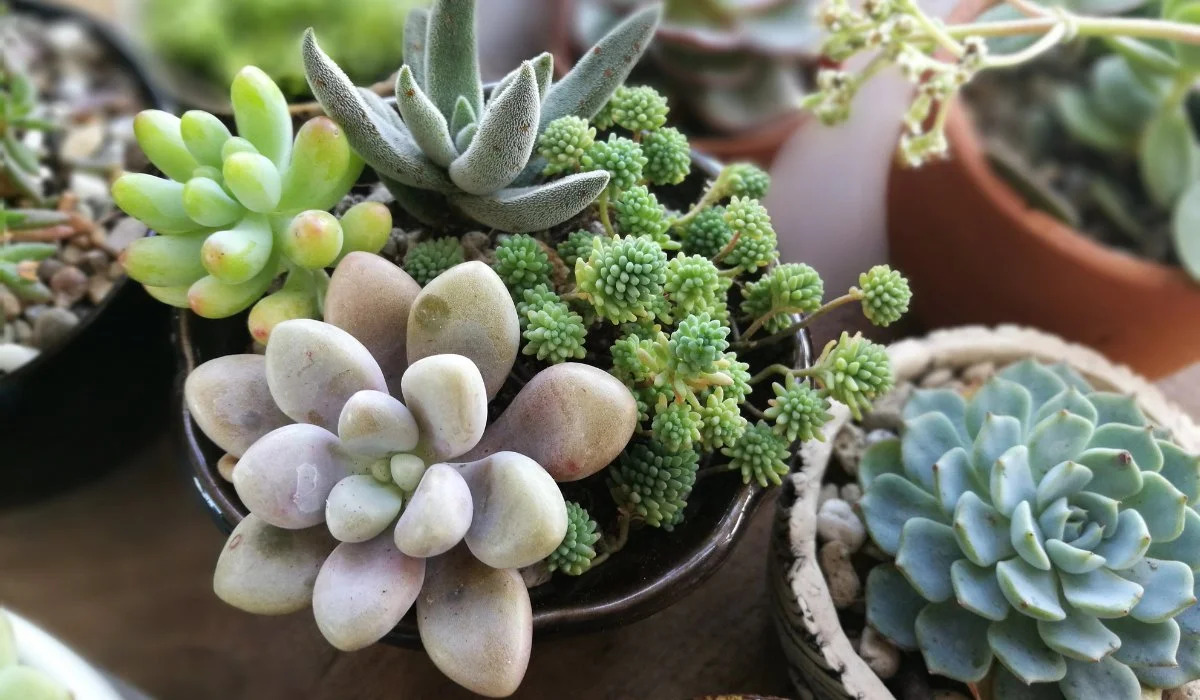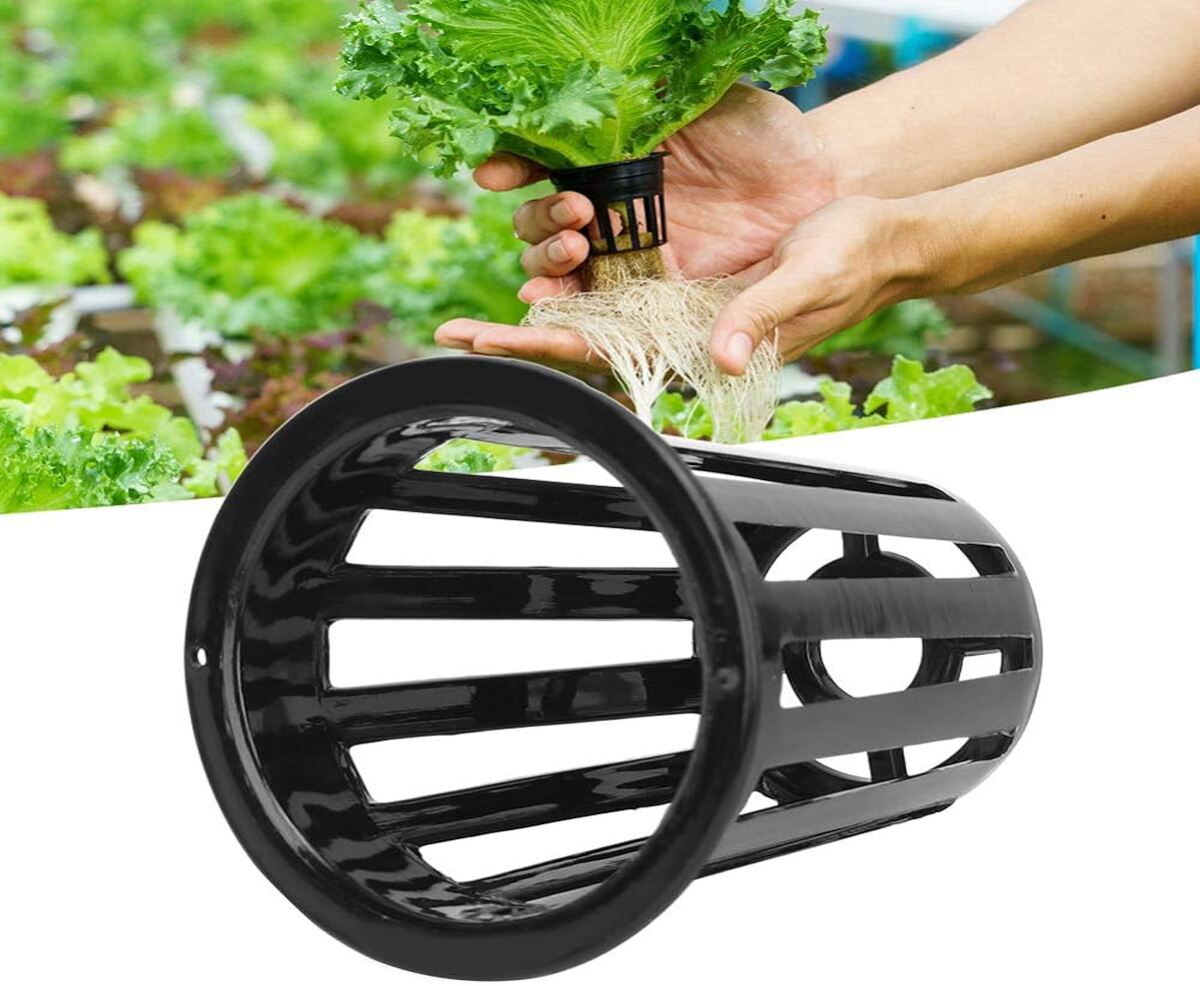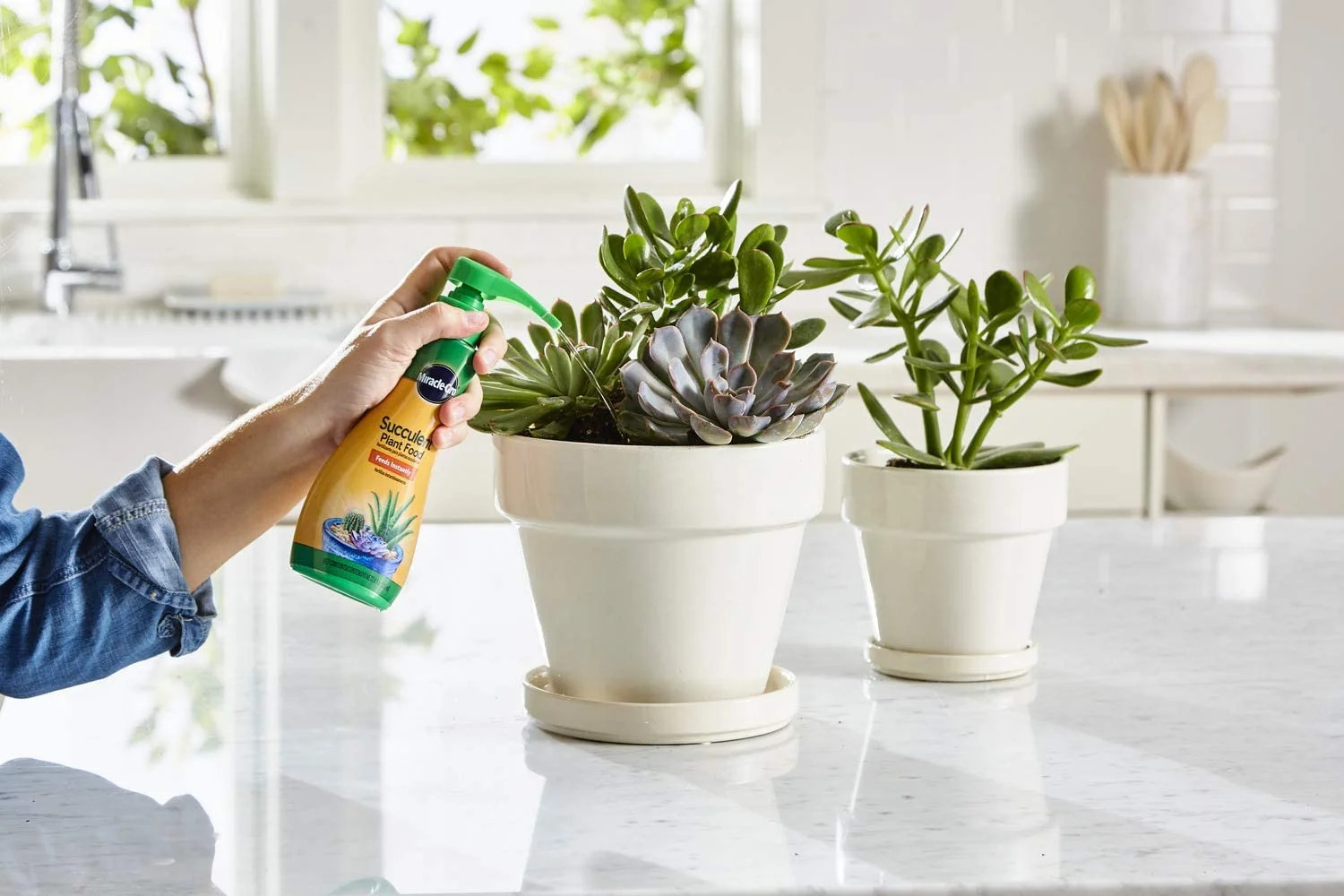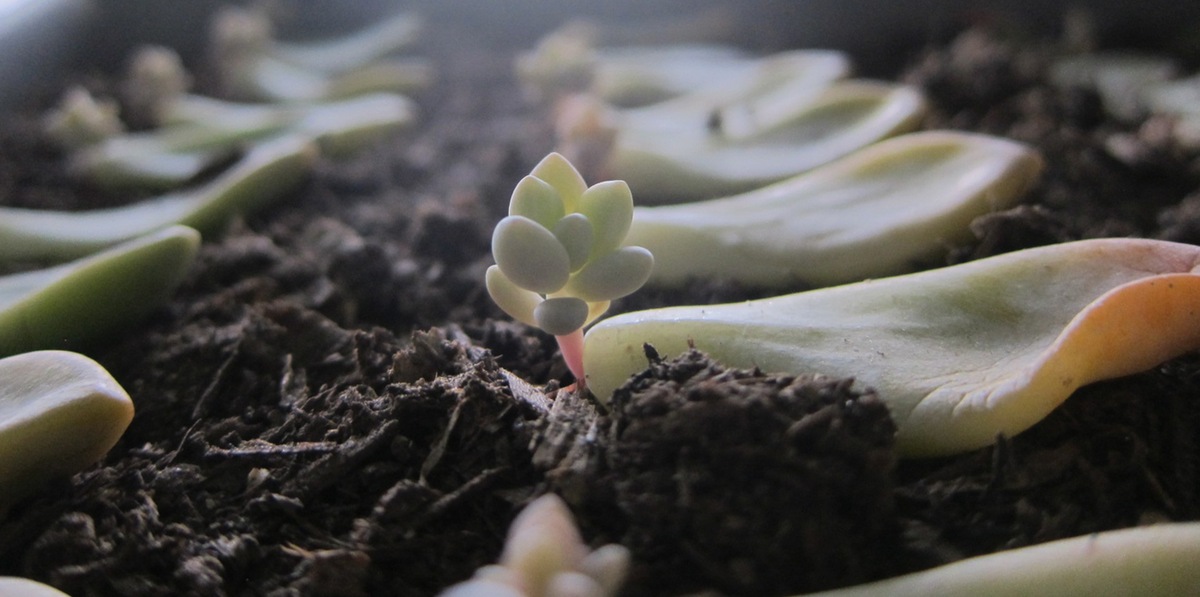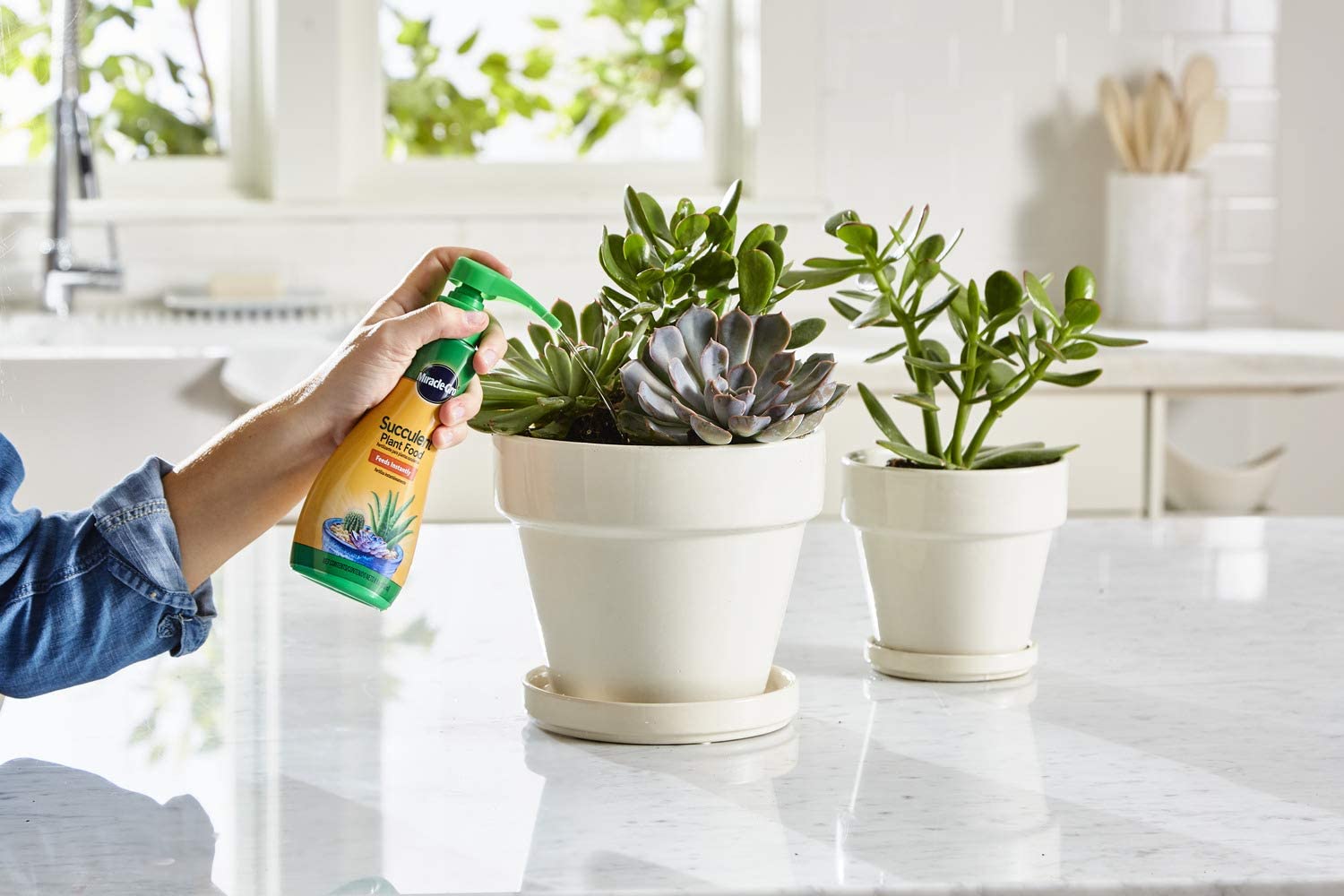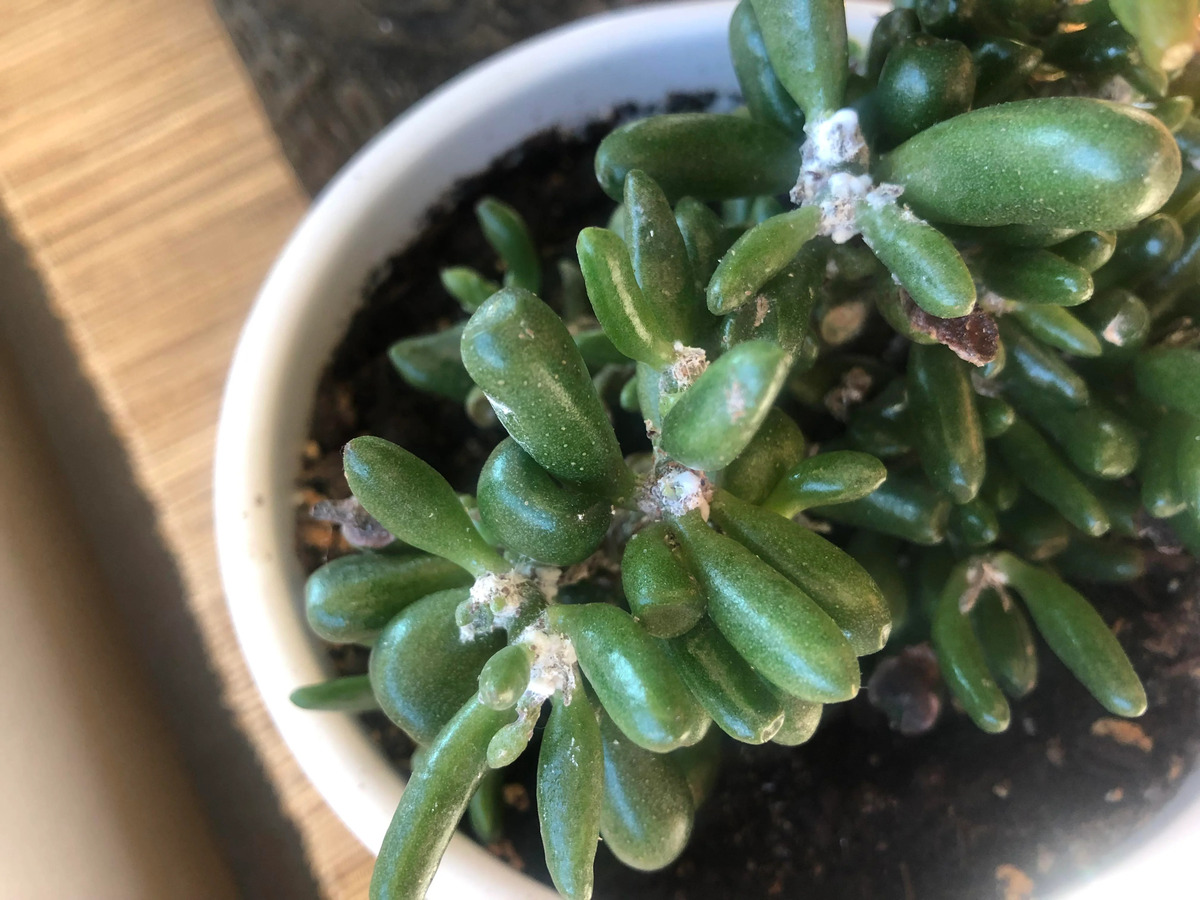Home>Types of Gardening>Ornamental Gardening>What Pot Is Best For Succulents
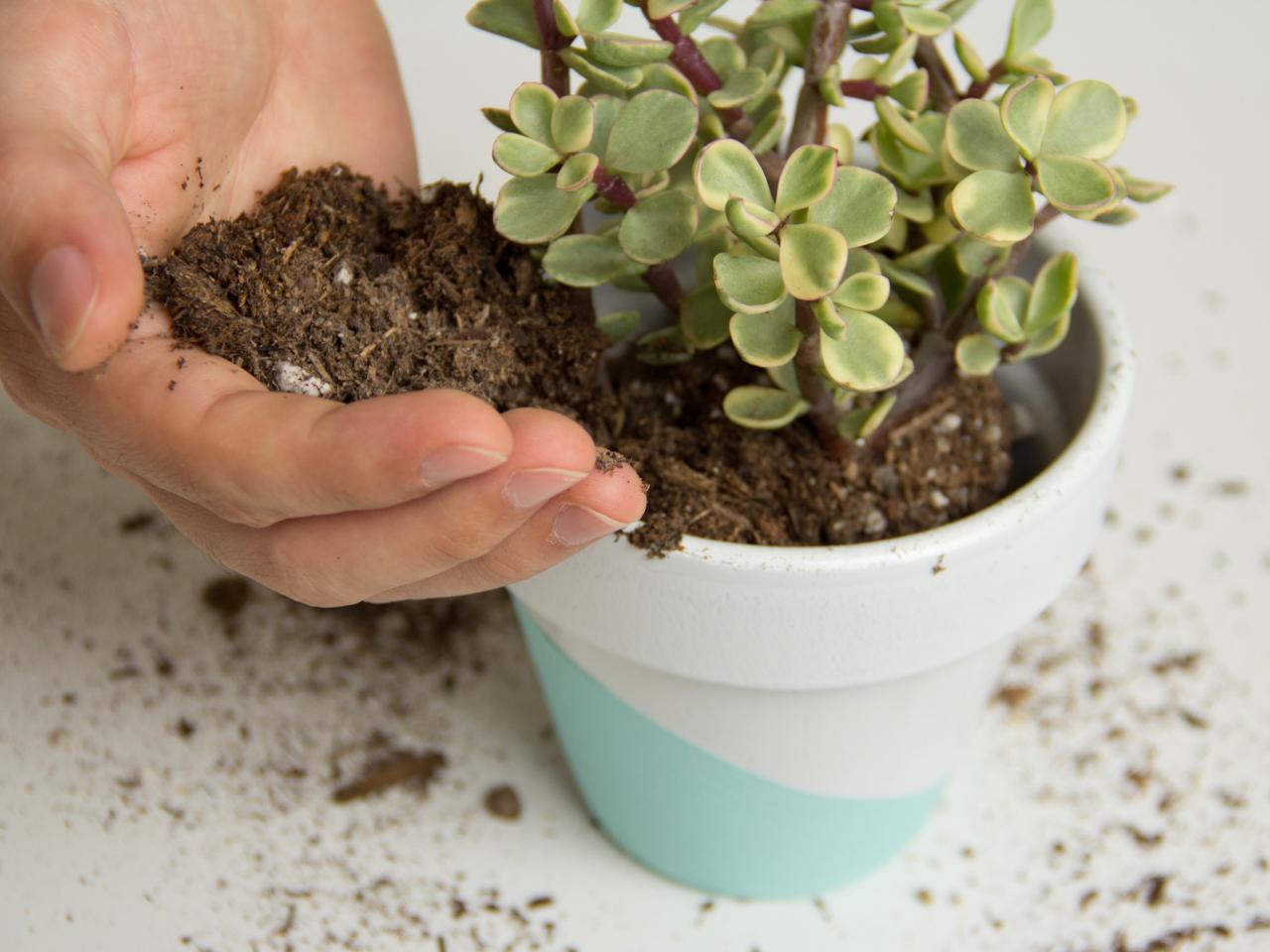

Ornamental Gardening
What Pot Is Best For Succulents
Published: December 26, 2023
Looking for the perfect pot for your succulents? Discover the best options for ornamental gardening and ensure healthy growth and vibrant displays.
(Many of the links in this article redirect to a specific reviewed product. Your purchase of these products through affiliate links helps to generate commission for Chicagolandgardening.com, at no extra cost. Learn more)
Table of Contents
Introduction
Welcome to the world of ornamental gardening, where every plant has its own story to tell and adds beauty to any space. Among the many fascinating plant options, succulents have gained immense popularity in recent years. Their unique and resilient nature makes them an ideal choice for both indoor and outdoor gardens.
However, when it comes to cultivating succulents, choosing the right pot is just as important as selecting the right variety. The right pot not only provides a suitable environment for your succulents to thrive but also complements their aesthetics.
In this article, we will explore the different types of pots available for succulents and help you understand the factors to consider when selecting the best pot for your beloved succulent collection.
From clay pots to glass containers, each type of pot has its own set of advantages and considerations. By understanding the unique characteristics of each pot material, you will be able to provide the optimal growing conditions for your succulents while adding a touch of style to your garden.
So, let’s dive in and discover the world of succulent pots to find the perfect match for your plants!
Understanding the Needs of Succulents
Before we delve into the different types of pots for succulents, it’s essential to have a basic understanding of their needs. Succulents are known for their water-storing capabilities, which allow them to thrive in dry environments. They have thick, fleshy leaves and stems that store water, enabling them to withstand periods of prolonged drought.
One of the key factors in succulent care is ensuring the proper drainage of water. Succulents are susceptible to root rot if they are overwatered or if excess water remains stagnant in the pot. Therefore, it is crucial to choose a pot that provides adequate drainage and prevents water from pooling at the bottom.
In addition to good drainage, succulents also require a well-draining soil mix that allows air to circulate around their roots. This helps prevent the roots from rotting and encourages healthy growth. Consider using a succulent-specific soil mix or adding sand or perlite to regular potting soil to improve drainage.
Succulents also thrive in bright, indirect sunlight. They require several hours of sunlight each day to maintain their vibrant color and compact form. When choosing a pot for your succulents, keep in mind their sunlight requirements and select a pot that allows for proper exposure to sunlight.
Lastly, succulents are known for their slow growth and minimal nutrient requirements. Too much fertilizer can actually harm these plants. It’s best to use a balanced fertilizer sparingly, following the recommended dosage on the packaging, or opt for a slow-release fertilizer.
Now that we have a good understanding of what succulents need to thrive, let’s explore the various pot options available to meet these requirements.
Different Types of Pots for Succulents
When it comes to choosing the right pot for your succulents, there are several options to consider. Each type of pot has its own unique characteristics and benefits. Let’s take a closer look at some of the most popular choices:
1. Clay Pots
Clay pots, also known as terracotta pots, are a classic and popular choice for succulent gardening. These pots are made from unglazed clay, which allows for excellent drainage and airflow. The porous nature of clay pots helps to prevent overwatering and root rot. Additionally, clay pots provide some insulation to the roots, protecting them from extreme temperature fluctuations.
2. Ceramic Pots
Ceramic pots are a stylish and versatile option for succulents. These pots are available in a wide range of shapes, sizes, and colors, allowing you to express your personal style. Ceramic pots are typically glazed, which makes them less porous than clay pots. It’s important to choose a ceramic pot with drainage holes or add a layer of gravel at the bottom to ensure proper drainage.
3. Glass Pots
Glass pots can add a touch of elegance and sophistication to your succulent collection. These transparent containers allow you to showcase the intricate beauty of your succulents, including their roots. Glass pots are not porous, so it’s crucial to be cautious with watering to prevent water accumulation. They are best suited for more experienced gardeners who can accurately gauge their succulents’ watering needs.
4. Plastic Pots
Plastic pots are an affordable and lightweight option for succulent gardening. They are available in various sizes and colors and are easy to transport. Plastic pots tend to retain moisture more than other pot materials, so it’s important to ensure proper drainage and avoid overwatering. Look for plastic pots with drainage holes or consider drilling holes in the bottom for better airflow.
5. Wooden Pots
Wooden pots offer a unique and rustic charm to your succulent display. These pots are typically made from natural wood or reclaimed materials, adding an eco-friendly touch to your garden. However, wooden pots are susceptible to rot and decay, so it’s important to line them with plastic or insert a waterproof liner before planting your succulents.
Each type of pot has its own advantages and considerations, so choose one that best suits your preferences and the needs of your succulents. Additionally, consider the size of the pot, ensuring that it provides enough space for your succulents’ roots to grow. With the right pot, you can create a stunning and thriving succulent garden that will be the envy of all.
Clay Pots
Clay pots, also known as terracotta pots, are a classic and popular choice for succulent gardening. These pots are made from unglazed clay, which allows for excellent drainage and airflow. The porous nature of clay pots helps to prevent overwatering and root rot.
One of the advantages of clay pots is their ability to absorb and release moisture gradually. This can be beneficial for succulents, as it mimics their natural environment. The gradual drying of the potting soil helps prevent waterlogged conditions, which can be detrimental to the plant’s health.
Clay pots are available in various sizes and shapes, making them versatile for different succulent varieties and arrangements. They have a warm and earthy appearance that complements the natural aesthetics of succulents. The neutral color of clay pots also allows the focus to be on the vibrant colors and unique textures of the plants.
It’s important to note that clay pots can be susceptible to cracking or breaking if exposed to extreme temperature changes. To minimize this risk, avoid placing clay pots in freezing temperatures or extreme heat. Additionally, be cautious when handling clay pots, as they can be fragile.
When using clay pots for succulents, make sure they have drainage holes at the bottom to allow excess water to escape. Proper drainage is crucial in preventing water accumulation, which can lead to root rot. You can also place a layer of gravel or small stones at the bottom of the pot to further enhance drainage.
As clay pots are porous, they may require more frequent watering compared to pots made from other materials. Succulents usually prefer periods of dryness between waterings, so monitor the soil moisture levels and adjust your watering schedule accordingly.
To maintain the durability and appearance of clay pots, it’s recommended to clean them regularly. Remove any debris or mineral deposits, and scrub them gently with a brush and mild detergent if necessary. Allow them to dry completely before reusing them.
In summary, clay pots are an excellent choice for succulent gardening due to their porous nature, which promotes proper drainage and airflow. Their ability to absorb and release moisture gradually mimics the natural environment of succulents. With proper care and attention, clay pots can provide a beautiful and functional home for your succulent collection.
Terra Cotta Pots
Terra cotta pots, also known as clay pots, are a popular and timeless choice for succulent gardening. These pots are made from baked clay and have a porous nature, allowing for excellent drainage and airflow. The natural material and reddish-brown color of terra cotta pots add a rustic and earthy charm to any succulent arrangement.
One of the key advantages of terra cotta pots is their ability to absorb excess moisture from the soil. This helps prevent overwatering and root rot, which can be detrimental to succulents. The porous nature of these pots allows the soil to dry out more quickly, mimicking the natural environment of these plants.
Terra cotta pots also regulate the temperature of the soil, keeping it cooler in hot weather and warmer in cool weather. This helps protect the roots of succulents from extreme temperature fluctuations, which they are not well-suited for.
Another benefit of terra cotta pots is their durability. When properly cared for, these pots can last for many years. They are resistant to breakage and can withstand outdoor elements. However, it’s important to note that terra cotta pots can be fragile if dropped or mishandled.
When using terra cotta pots for succulents, it’s crucial to ensure proper drainage. Choose pots with drainage holes at the bottom to allow excess water to escape. If the pot you have doesn’t have drainage holes, you can create them by using a drill or hammer and nail. Ensuring good drainage is essential to prevent waterlogged conditions that can harm the succulents’ roots.
Terra cotta pots often develop a natural patina over time, which adds to their aesthetic appeal. However, they can also attract mineral deposits on the surface, commonly known as white efflorescence. To prevent this, soak the pot in a mixture of water and vinegar or scrub it gently with a brush. Regular cleaning will help maintain its natural appearance.
Remember that terra cotta pots are heavier than some other pot materials, so consider their weight when choosing their location, especially if you plan to move them frequently.
In summary, terra cotta pots are a reliable and visually appealing option for growing succulents. Their porous nature allows for proper drainage and airflow, preventing overwatering and root rot. With their durability and natural charm, terra cotta pots provide an ideal habitat for your succulent collection.
Ceramic Pots
Ceramic pots are a stylish and versatile choice for succulent gardening. These pots are made from a variety of clays and are typically glazed to provide a smooth and colorful finish. Ceramic pots come in a wide range of shapes, sizes, and colors, allowing you to express your personal style and enhance the aesthetics of your succulent collection.
One of the key advantages of ceramic pots is their visual appeal. The glazed surface of these pots can feature intricate designs, bold colors, or subtle patterns, adding a decorative element to your succulent display. Ceramic pots allow you to create eye-catching arrangements that showcase the unique textures and colors of your succulents.
Ceramic pots are generally less porous than other pot materials, such as clay or terra cotta. This means that they may retain moisture more effectively, which makes them suitable for succulents that prefer slightly more humidity. However, it’s important to ensure proper drainage to prevent waterlogged conditions, which can lead to root rot.
When selecting a ceramic pot for your succulents, look for pots with drainage holes at the bottom. If the pot you choose doesn’t have drainage holes, you can either drill holes yourself or create a layered drainage system using gravel or small stones at the bottom of the pot. Ensuring adequate drainage is crucial to maintaining the health of your succulents.
It’s important to note that ceramic pots can be more fragile compared to pots made from other materials, such as plastic or metal. Care should be taken when handling and moving these pots to avoid breakage. Additionally, be cautious when placing ceramic pots in extremely cold or hot environments, as rapid temperature changes can cause them to crack.
To care for ceramic pots, clean them regularly to remove dust, dirt, or mineral deposits that may accumulate on the glazed surface. Use a gentle detergent and a soft brush to clean the pots, and avoid using abrasive materials that could scratch the glaze.
In summary, ceramic pots are a popular choice for succulent gardening due to their versatility and visual appeal. Their glazed surface allows for a wide range of designs and colors, enhancing the aesthetics of your succulent arrangements. Remember to ensure proper drainage and handle ceramic pots with care to create a stunning and thriving succulent display.
Glass Pots
Glass pots offer a unique and elegant option for displaying succulents. These transparent containers allow you to showcase the intricate beauty of your plants, including the colorful foliage and delicate details. Glass pots can add a touch of sophistication and create a stunning focal point in any space.
One of the advantages of glass pots is their aesthetic appeal. The transparency of the glass allows for a clear view of the succulent’s roots and soil, creating an intriguing display. This can be especially captivating when using succulents with unique root structures or when incorporating decorative elements such as colored pebbles or moss.
Glass pots also provide excellent drainage as they are not porous like clay or ceramic pots. However, this also means that they can retain moisture longer, so it’s important to be cautious with watering. Overwatering in glass pots can lead to water accumulation and root rot. Monitor the moisture levels and adjust your watering schedule accordingly to prevent any harm to your succulents.
When using glass pots, it’s important to consider the lighting conditions. Succulents thrive in bright, indirect sunlight, and glass pots can intensify the heat and sunlight exposure. Be mindful of placing glass pots in direct sunlight, as they can amplify the heat and potentially damage the plants. It’s best to provide filtered or indirect sunlight to prevent overheating.
Glass pots are available in various shapes and sizes, allowing for creative arrangements and unique compositions. You can use them individually or group them together to create a visually stunning succulent display. Consider the size of the pot in relation to the size of your succulent, ensuring that it provides enough space for the roots to grow comfortably.
When it comes to cleaning glass pots, it’s important to handle them with care. Avoid using abrasive materials that could scratch the glass. Use a mild detergent or glass cleaner and a soft cloth to maintain the clarity and shine of the glass. Regular cleaning will help prevent any buildup of dust or water stains.
In summary, glass pots offer a sophisticated and captivating way to showcase your succulents. Their transparency allows for a clear view of the plants and their roots, creating a unique display. Just be mindful of proper drainage and light exposure to ensure the health and well-being of your succulents in glass pots.
Plastic Pots
Plastic pots are a practical and affordable option for growing succulents. These lightweight containers are widely available and come in a variety of sizes, shapes, and colors. Plastic pots offer several advantages that make them a popular choice among succulent enthusiasts.
One of the key advantages of plastic pots is their affordability. They are generally less expensive than pots made from other materials like clay or ceramic. This makes them a cost-effective choice, especially if you have a large succulent collection or if you’re just starting your gardening journey.
Plastic pots are also lightweight, making them easy to move and handle. This is particularly advantageous if you plan to rearrange or transport your succulents regularly. The lightweight nature of plastic pots can also be beneficial if you have hanging or elevated planters.
Plastic pots are typically durable and resistant to breakage. They are not as fragile as pots made from materials like clay or glass, making them suitable for outdoor use. Plastic pots can withstand various weather conditions, including heat, cold, and rain.
When choosing plastic pots for your succulents, look for pots with drainage holes at the bottom. Proper drainage is crucial to prevent water from accumulating and causing root rot. If your plastic pot doesn’t have drainage holes, you can create them yourself using a drill or a heated nail.
It’s important to note that plastic pots may retain more moisture compared to pots made from porous materials like clay or terra cotta. This means you need to be extra cautious with watering and ensure the soil is not overly saturated. Monitoring the moisture levels is key in preventing waterlogged conditions that can harm the succulent’s roots.
To care for plastic pots, clean them regularly to remove accumulated dirt or mineral deposits. You can wash them with mild soap and water or use a mixture of vinegar and water to remove any stains. Avoid using harsh chemicals or abrasive materials that could damage the surface of the plastic.
In summary, plastic pots are a practical and affordable option for growing succulents. They are lightweight, durable, and easy to find. Just ensure proper drainage and be mindful of moisture levels to maintain the health and well-being of your succulent collection in plastic pots.
Wooden Pots
Wooden pots offer a unique and natural appeal to your succulent collection. Made from various types of wood, these pots add a rustic and organic touch to your gardening experience. While wooden pots may require some extra care and attention, they can be a charming and eco-friendly option for growing succulents.
One of the advantages of wooden pots is their natural beauty. The grain patterns and rich colors of the wood can enhance the overall aesthetics of your succulent arrangement. Wooden pots bring a sense of warmth and authenticity to any space, making them an excellent choice for both indoor and outdoor gardens.
However, it’s important to note that wood is a porous material and can absorb water from the soil. Without proper precautions, this can lead to rot and decay. To mitigate this risk, it’s recommended to line the wooden pot with plastic or insert a waterproof liner before planting your succulents.
It’s crucial to ensure proper drainage in wooden pots to prevent water from stagnating. Consider drilling or creating drainage holes in the bottom of the pot to allow excess water to escape. Without adequate drainage, the roots of your succulents can become waterlogged, leading to root rot.
Wooden pots require some extra maintenance to ensure their longevity. The wood can be susceptible to rot and degradation over time, especially when exposed to moisture. Regularly inspect the pot for any signs of damage or decay, and treat the wood with a suitable wood preservative or sealant to protect it from the elements.
When it comes to positioning wooden pots in your garden or indoor space, it’s important to consider their exposure to sunlight and moisture. Some types of wood may be more resistant to moisture damage, while others may require more frequent inspections and protection from direct contact with damp surfaces.
Wooden pots are a great option for succulent gardening, but they do require a bit of extra care compared to other pot materials. With proper maintenance, they can provide a beautiful and eco-friendly home for your succulent collection. Enjoy the timeless charm and natural essence that wooden pots bring to your gardening experience.
Choosing the Best Pot for Your Succulents
When it comes to selecting the best pot for your succulents, there are several factors to consider. The right pot will not only provide a suitable environment for your plants to thrive but also enhance the overall aesthetics of your garden. Here are some important factors to keep in mind:
1. Drainage
Proper drainage is crucial for the health of succulents. Look for pots with drainage holes at the bottom to allow excess water to escape. Good drainage prevents waterlogging and helps prevent root rot. If you find a pot you love without drainage, you can modify it by drilling or creating holes yourself.
2. Material
Consider the different pot materials available, such as clay, ceramic, glass, plastic, or wood. Each material has its own advantages and considerations. Clay and terra cotta pots provide excellent drainage, while ceramic and glass pots offer aesthetic appeal. Plastic pots are lightweight and affordable, while wooden pots add a natural and rustic touch to your garden. Choose a material that suits your preferences and the needs of your succulents.
3. Size
Choose a pot that provides enough space for your succulents to grow and develop. Keep in mind that succulents generally prefer a slightly snug fit, rather than being placed in pots that are too large. A pot that is too big can retain excess moisture and potentially harm the roots. On the other hand, a pot that is too small can restrict root growth.
4. Aesthetics
Consider the overall look and feel you want to achieve with your succulent garden. If you prefer a traditional and timeless appearance, clay or terra cotta pots may be your go-to choice. If you want to add a modern and sleek touch, ceramic or glass pots can be a great option. The choice of pots should complement the beauty of your succulents and blend harmoniously with your garden’s style.
5. Environmental Factors
Think about the environment in which your succulents will be placed. Consider factors like sunlight exposure, temperature fluctuations, and humidity levels. Some materials, like glass, may intensify sunlight and heat, while others, like wood, may be more susceptible to damage from moisture. Understanding these environmental factors will help you choose a pot that provides the best conditions for your succulents.
By considering these factors, you can choose the best pot for your succulents, providing them with an optimal growing environment while adding beauty to your gardening space. Remember to regularly monitor the moisture level in the soil, adjust your watering schedule accordingly, and enjoy watching your succulents thrive in their new homes.
Conclusion
Choosing the right pot for your succulents is essential for their overall health and appearance. Each type of pot material, whether it’s clay, ceramic, glass, plastic, or wood, has its own unique characteristics and benefits. Understanding the needs of your succulents, such as proper drainage, sunlight exposure, and suitable growing conditions, will guide you in selecting the best pot.
Clay and terra cotta pots are a classic choice, providing excellent drainage and a natural aesthetic. Ceramic pots offer versatility and style with their wide range of colors and designs. Glass pots showcase the beautiful details of succulents and contribute an elegant touch to any space. Plastic pots are affordable, lightweight, and easy to move around. Wooden pots add a rustic charm to your garden, although they require additional attention to prevent moisture-related issues.
Consider the size of the pot, ensuring enough space for root growth without being excessively large. Pay attention to the aesthetics, selecting a pot that complements the beauty of your succulent collection and fits your garden’s style. Additionally, take into account the environmental factors, such as sunlight exposure and temperature fluctuations, to choose a pot that creates an optimal growing environment.
By carefully selecting the best pot for your succulents, you create a nurturing home for them to thrive. Remember to provide proper drainage, monitor moisture levels, and maintain the pots to ensure the long-term health and beauty of your succulent garden. Enjoy the unique and captivating world of succulent gardening, where every pot and plant combination tells its own beautiful story.
